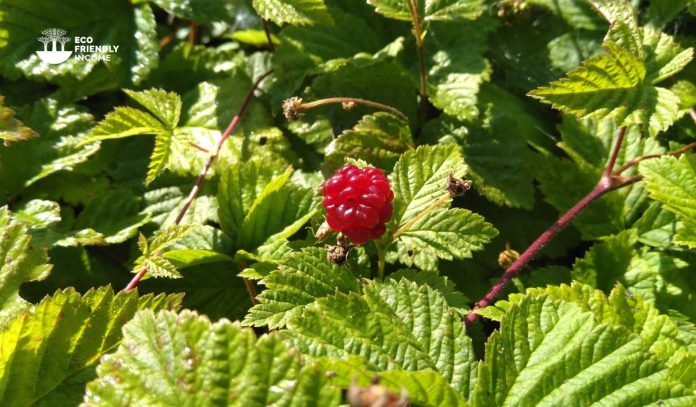A field guide on how to identify and propagate Dewberry (Rubus Pubescens), a very hardy zone 2 perennial shrub that is native to North America.

Hardiness Zone: 2-5

Soil Type: Clay, loam, sand.

Water: High.

Exposure: Full Sun to Partial Shade.
How to Identify Dewberry (Rubus pubescens)
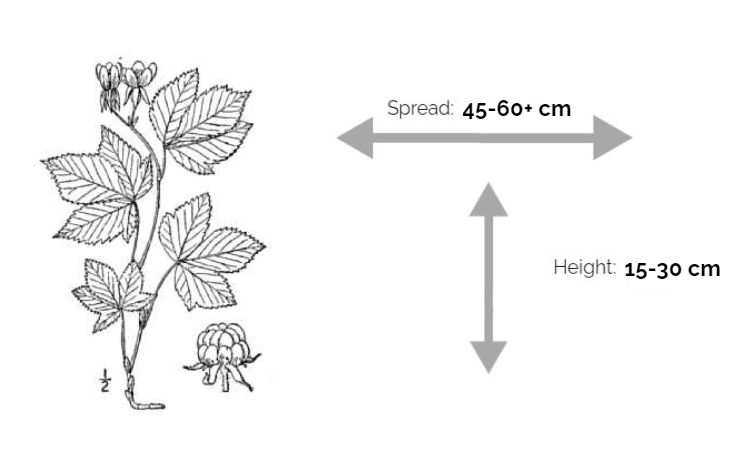
Leaves
Dewberry leaves are elliptical to obovate in shape and have serrated margins. They grow in alternate arrangements and trifoliolate structures. The outer margin leaves have 2 additional tips, giving the leaflet a 5-tipped appearance. The leaves are 2-5 cm long and 1-3 cm wide.
Flowers
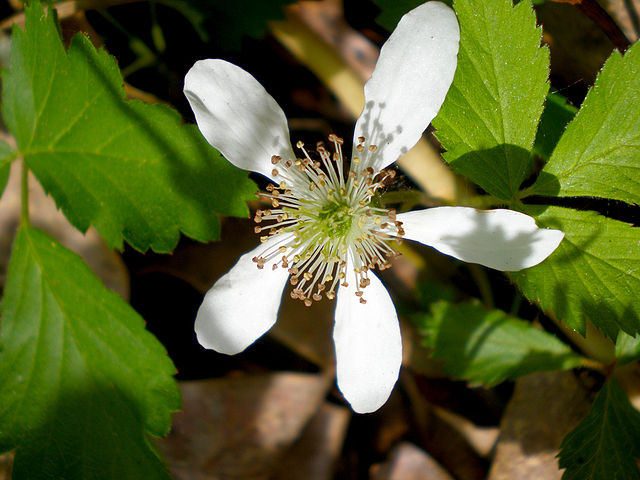
Rubus pubescens flowers are small and white, with five petals. They usually grow alone on the stems of the plant but you can sometimes see them in clusters.
Flowering Season
Dewberry (Rubus pubescens) blooms from May to June. Fruits appear not long after until mid-September.
Stems
If you look closely at their stems, you will see little hairs and a reddish color on mature plants. This is one of the primary factors to identify dewberry. At first sight, you might misidentify them for the closely resembling wild strawberries! The FAQ at the bottom of the page will cover the difference.
Fruit
Dewberry fruits are often mistaken for raspberry, while they do taste very similar, dewberries are packed with much more flavor! Although rarer to find in large quantities compared to wild raspberry.
In my experience dewberry fruits are often darker in color than raspberries, with more of a dark red color as they ripen.
They more closely resemble blackberries, which makes sense considering they are in the same family.
Habitat
This plant is very common in the boreal forest, it’s often seen growing in clayey lands, sometimes at the edge of poorly drained soils like bogs and swamps.
From my personal experience, it likes to populate disturbed forests where logging activity occurred.
Dewberry plants like to send shoots that spread far and wide and create a sort of vine-like carpet on the forest floor. Spreading habits like that make dewberries easier to propagate even without seeds.
Wildlife Value
Dewberries are an important food source for many animals, including birds, small mammals, and insects. Their flowers are pollinated by insects and fruits eaten by birds, a variety of boreal forest mammals.
How to Propagate Dewberry (Rubus pubescens)
There are two easy ways to propagate dewberry, which can be done straight from a wild plant.
- By dividing plants.
- By harvesting the seed and sowing.
Let’s look at how exactly you can do that:
How to Propagate Dewberry by Division
You can divide dewberry plants nearly any time of the year, given there’s been enough time for the year’s growth to spread.
They are tender, and require plenty of humidity but can root fast.
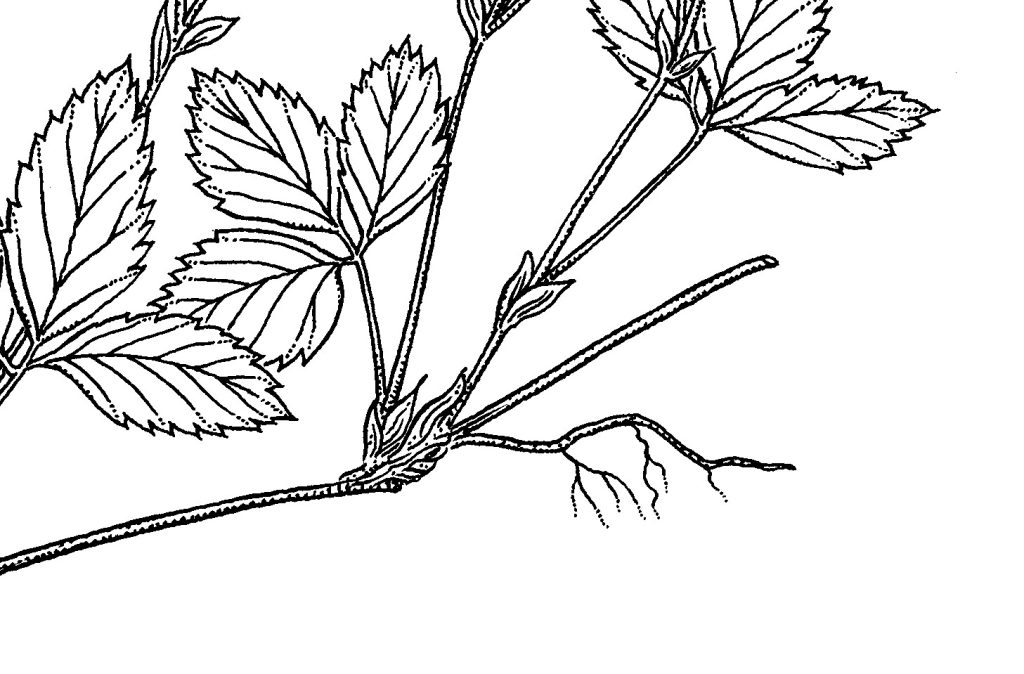
Here’s how to divide dewberry plants.
- First, identify a new shoot from this season’s growth.
- Next, find a stem that’s trailing on the ground.
- In general, dewberry nodes that have had contact with soil will already be starting to make roots.
- Find those nodes that are starting to root and cut.
- When you cut, you want to do it cleanly and at an angle.
- One long stem can give you multiple nodes to cut and divide.
- Next, moisten your divided plants, dip the ends in rooting hormone, then lightly flick off excess powder.
- A good rooting medium for dewberry is peat moss or simply a good loam.
- From there, keep watering the divisions to maintain humidity, and cover the pot with plastic if the humidity is too low.
- Roots will grow strong within 4-6 weeks.
Tip: They often grow additional leaves before more roots. You can clip off the new leafy growths if you want the roots to strengthen faster.
How to Propagate Dewberry From Seed
If you want to grow them from scratch and have wild plants growing nearby, it’s also pretty easy to propagate dewberry from seed.
How to Harvest Dewberry Seeds
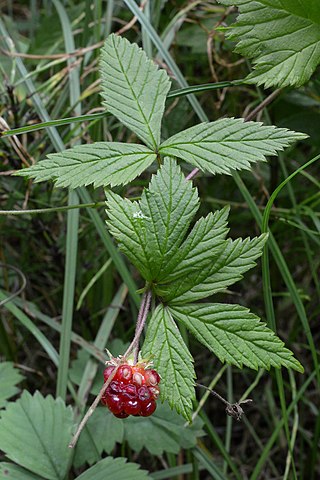
Personally, to harvest wild dewberry seeds, I found the best method was to collect some fruits and let them dry at room temperature.
When all the moisture leaves the fruits, you’ll be left with seeds that are easy to harvest.
How to Germinate
Stratification: Dewberry seeds need to go through a stratification process to germinate. That means a warm – cold – warm process. The cold period should be about 90 days. An easy way to stratify is to place them in a zip lock bag with dampened sand in a fridge.
From there on out it’s pretty easy:
Sow the dewberry seeds on sandy compost, then cover with a fine layer of sand and moisten.
Keep the soil moist, and place it in a cool area. Seeds that were stratified should germinate sporadically within a couple of weeks.
When they’ve grown enough, transplant them in a good garden soil mix with peat, compost, black soil, and sand.
Let grow into a fair shrub before transplanting outdoors.
FAQ
Q: How do you tell wild strawberries (fragaria virginiana) apart from dewberry?
A: Wild strawberry (fragaria virginiana) leaves are rounder, and have 3 leaflets rather than the common 5 leaflets and pointier pattern for dewberry. They both have red stems with spreading habits which makes them easy to mix up. The leaf is the main differentiator, but of course, once fruiting the difference is quite visible.
Q: Can you eat dewberry?
A: You can safely eat dewberries, you’ll find they closely resemble the flavor of blackberries and raspberries. Dewberries are also safe for pets to eat.
Q: Is dewberry invasive?
A: If you live in North America, dewberry is a native plant that is part of the ecosystem. Although if you cultivate them at home, you can find yourself with a large network of dewberry vines within a few summers. Cultivate with caution.
Q: What is the difference between dewberries and blackberries?
A: Dewberry and blackberries are in the same family, but they do have differences. The main difference between them is their growth habit. Dewberries grow in trailing style along the forest floor while blackberries have been cultivated to grow upright, and have larger fruit and no thorns.

